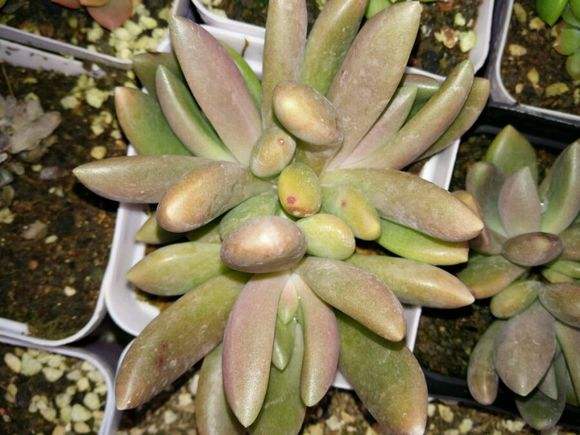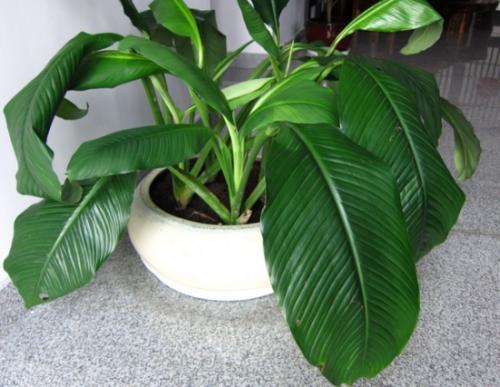Countermeasures to several common problems in planting and maintenance of sweet-scented osmanthus
The reason why the four seasons cinnamon blossoms all the year round but is not fragrant is due to the weak aroma of the variety itself. Among the common varieties of sweet-scented osmanthus, the strongest aroma is Jingui, followed by silver cinnamon, followed by cinnamon, while the aroma of four seasons osmanthus is the lightest. As an economic crop, few people cultivate it because it blossoms sparsely and its aroma is not strong; as an ornamental potted plant, it is suitable for potted plants because of its beautiful tree shape and flowering all the year round.

1. Why is the cinnamon not fragrant?
The reason why the four seasons cinnamon blossoms all the year round but is not fragrant is due to the weak aroma of the variety itself. Among the common varieties of sweet-scented osmanthus, the strongest aroma is Jingui, followed by silver cinnamon, followed by cinnamon, while the aroma of four seasons osmanthus is the lightest. As a cash crop, few people cultivate it because of its sparse flowering and weak aroma; as an ornamental potted plant, it is suitable for potted plants because of its beautiful tree shape and flowering in the four seasons. Most of the four seasons cinnamon grows in clusters, the flowers are yellow and white, sparse, the aroma is light and the flowering period is long, generally, except in the severe winter and hot summer season, it can blossom once every two months, the aroma is slightly stronger in autumn, and the rest is lighter. Its varieties are big leaf and leaflet cinnamon. Laurel in the cultivation process of lack of light and phosphate fertilizer to make the flower fragrance talk. If the plant is placed in a sunny and ventilated environment, topdressing every 10 days and proper application of phosphate fertilizer can increase the aroma of flowers to a certain extent, but it is still not as good as other varieties.
2. why don't potted sweet-scented osmanthus blossom?
One is the lack of light. Sweet-scented osmanthus likes light. When the vegetative growth period is less than 60 ℃, its growth and development decline, vegetative growth becomes worse, and the number of flowering decreases. When there is a serious lack of light, it can not blossom because of the weakening of photosynthesis and the accumulation of nutrients. Therefore, it is necessary to give sufficient light. The second is lack of fat. The growth and flowering of sweet-scented osmanthus need to consume a lot of nutrients. The barren or insufficient fertility of basin soil will also affect the growth and flowering of plants. Therefore, nitrogen-based fertilizer should be applied once or twice during the period of flower bud differentiation (from the end of May) to flowering, and phosphorus-based fertilizer should be applied for 2 times before flowering. Third, the basin soil is too wet. Sweet-scented osmanthus avoid too wet and stagnant water, waterlogging will cause rotten roots and lead to poor growth and non-flowering, serious will also cause the death of pot plants. Watering should follow the principle of "no dry, no watering, watering thoroughly". After heavy rain and rainstorm, we should remove the stagnant water in the basin in time, pay special attention to the sunny weather after rain, and avoid damaging the roots. Fourth, the soil is alkaline. Sweet-scented osmanthus likes slightly acidic soil, and the suitable pH value is 5.5-6.5. Sweet-scented osmanthus, which grows in alkaline soil, often grows badly and affects flowering. Fifth, smoke pollution. Sweet-scented osmanthus is not resistant to smoke and pollution. After too much smoke or pollution, the leaves will become smaller and fall off easily, and there will be only long leaves and no flowering. Sixth, it is under the age of flowering.
3. What is the edible health function of sweet-scented osmanthus?
Sweet-scented osmanthus tea has a refreshing effect. After being slightly scalded in boiling water, sweet-scented osmanthus is picked up and dried, crushed with sugar and sealed in a bottle to maintain its color and aroma and can be used as a food spice. Sweet-scented osmanthus, pure lotus root powder mixed with white sugar, it becomes sweet-scented osmanthus lotus root powder, delicious and appetizing. Take high-quality jujube, add sugar to boil, when the soup is about to run out, add sweet-scented osmanthus, that is, sweet-scented osmanthus jujube with invigorating spleen and appetizer. According to traditional Chinese medicine, sweet-scented osmanthus has a warm taste, fried soup, tea or wine, can remove phlegm and blood stasis, and has a certain curative effect on loss of appetite, phlegm, cough and asthma, intestinal wind and blood dysentery and abdominal pain with amenorrhea. Cassia twig, cinnamon seed and cinnamon root can all be used as medicine. Guizhi decoction, made of cassia twig, peony and ginger, jujube and licorice, specializes in treating exogenous wind pathogens, fever and headache. Cinnamon root tastes sweet and slightly astringent.
4. How to thaw the frozen sweet-scented osmanthus?
In early winter, sweet-scented osmanthus was invaded by cold wave, which was prone to freezing injury, the concentration of intercellular solution in the damaged plant increased, and the protoplast was seriously dehydrated, resulting in tender leaf atrophy. In this case, if the injured plant is placed in high temperature or direct sunlight, it will accelerate the death of sweet-scented osmanthus. The correct method should take slow thawing measures to make the cells gradually absorb water and return to normal. In this case, the potted flowers can also be wrapped in pots with waste newspapers with strong water absorption. Pay attention to do not damage the branches and leaves of potted flowers when bandaging, and avoid direct sunlight. So rest for one day, so that the temperature of the potted flowers will gradually rise. After this treatment, frozen potted flowers can be revived.
5. How to make the plant type of sweet-scented osmanthus symmetrical?
First, when planting sweet-scented osmanthus, let the flowers and trees be planted in the middle of the pot. after watering through the water, the skewed plants should be upright and lay a good foundation for later cultivation. The second is reasonable pruning. When pruning, we should pay attention to the overall appearance of flowers and trees, pay attention to keeping buds, and try to let the terminal buds grow to the gap. The strong branches are strongly cut, the useless weak branches are cut off, and those that need to be filled in the blanks are retained and cut lightly. The third is to bind the potted flowers appropriately. The gap in a certain direction is larger, so the dense branches can be bound to the gap by the method of binding. Fourth, often turn the basin. For sweet-scented osmanthus flowers that do not need pruning, often turn the basin, so that the gap toward the sun can induce new branches. Throughout the year, the sun always moves along with its orbit, so the light angle and intensity are always changing. When the flowerpot is fixed for a long time, one side of the plant always does not get proper light. Over time, the round potted plant grows differently because of uneven sunlight. Therefore, the flowerpot should be rotated 45 °every 10 days in the growing season. If you turn the flowerpot frequently, the plant will grow evenly in all angles and directions, the lateral branches around the trunk will be neat and uniform, and the leaves can receive sunlight evenly. Therefore, the plant type and posture can be plump and beautiful, and the ornamental effect can be achieved from all angles, which can make the branches and leaves more stretched and beautiful.
6. Why do sweet-scented osmanthus die easily at the turn of winter and spring?
The reason for this should be found from the management method. In addition to providing proper water and adequate light, it is especially important not to fertilize sweet-scented osmanthus in winter and keep it in a cool and cold environment. Because sweet-scented osmanthus is easy to die in winter, not because the environment is not hot enough, but because the environment is not cold enough. Winter is not warm in the origin of sweet-scented osmanthus. Sweet-scented osmanthus, which has adapted to this growing environment for thousands of years, overwintered in a warm place, and there was nothing unusual in the plant at the beginning. On the contrary, it seems to forget the coming of winter, sprouting and branching, looking like a thriving elephant. However, this situation can not be maintained for long, indoor lighting and temperature changes and other factors can not meet the same growth as in summer, and the phenomenon of old leaves falling off, new shoots wilting and plant death began to appear. In order to make the sweet-scented osmanthus survive the winter, put it in the environment of 0 ℃ and give it enough sunshine. Do not apply fertilizer to avoid the basin soil getting too wet. After winter, you will find that the sweet-scented osmanthus not only survived safely, but also grew stronger than those who survived the winter in a high temperature environment.
Time: 2019-04-18 Click:
- Prev

Treatment of rotten roots and yellowing leaves of rich trees
Let the rich tree into a smooth rod, then dig up from the ground and let it dry naturally in the semi-shade for 1-2 days, making the trunk soft and easy to bend. It is very important to braid the rich tree, which has a great impact on its later growth. If you don't pay attention to it, it is easy to appear the yellow leaf rich tree.
- Next

How to maintain the large-scale green plants in the hulk hulk
For the hulk, flower friends should be very familiar with its cultivation, management methods and other problems of plant encyclopedia Xiaobian send their own experience summary of ornamental plant name, perennial evergreen shade herb foliage plant, short and stout stem, few tillers, plant height can reach more than 1 meter, is a large species in the taro series
Related
- Fuxing push coffee new agricultural production and marketing class: lack of small-scale processing plants
- Jujube rice field leisure farm deep ploughing Yilan for five years to create a space for organic food and play
- Nongyu Farm-A trial of organic papaya for brave women with advanced technology
- Four points for attention in the prevention and control of diseases and insect pests of edible fungi
- How to add nutrient solution to Edible Fungi
- Is there any good way to control edible fungus mites?
- Open Inoculation Technology of Edible Fungi
- Is there any clever way to use fertilizer for edible fungus in winter?
- What agents are used to kill the pathogens of edible fungi in the mushroom shed?
- Rapid drying of Edible Fungi

